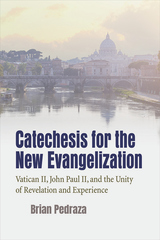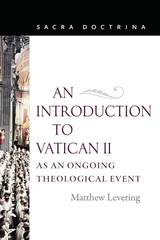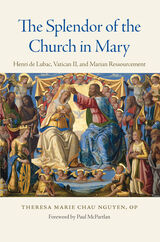

This monumental two-volume publication brings together in the original languages and an English translation, all the decrees of all the ecumenical councils from Nicaea I to Vatican II. As such it represents an indispensable reference work for theologians and historians, as well as for anyone interested in the development of Christian thought and doctrine. Indeed, these decrees represent the authoritative distillation of Christian tradition which itself is bound together with scripture "in a close and reciprocal relationship" so that the two "form a single sacred deposit of the word of God, entrusted to the church."
The original text is a reproduction of the brilliant edition by G. Alberigo and others of the decrees Conciliorum Oecumenicorum Decreta, which provides for the first time a reliable critical text for all the ecumenical councils. The English translation faces each page of the original text and is the first rendering into English of all these decrees taken together. The translators have used inclusive language throughout to emphasize the continuity of conciliar documents.
The 2,528 total pages of these two volumes include all the authenticated texts and their English renderings as well as a preface and introduction by the oringinal languages editor, a foreword by the English language editor, a bibliography for each decree, various commentaries and explanatory notes, and ten comprehensive indices.

Volume two of this two-volume set includes the decrees of the ecumenical councils from Trent to Vatican II. Of particular interest to Roman Catholic historians and theologians, as well as anyone interested in the development of Christian thought and doctrine, this volume presents the decrees in their original language and in English translation. These decrees represent the authoritative distillation of Christian tradition which itself is bound together with scripture "in a close and reciprocal relationship" so that the two "form a single sacred deposit of the word of God, entrusted to the church." The original text is a reproduction of the brilliant edition by G. Alberigo and others of the decrees Conciliorum Oecumenicorum Decreta, which provides for the first time a reliable critical text for all the ecumenical councils. The English translation faces each page of the original text and is the first rendering into English of all these decrees taken together. The translators have used inclusive language throughout to emphasize the continuity of conciliar documents.
This volume includes authenticated texts and their English renderings for the Councils of Trent, Vatican I, and Vatican II. The text of each council features an introduction, bibliography, and various commentaries and explanatory notes. Additionally, ten comprehensive indices allow for referencing across several categories such as Biblical verse, proper names, and chronology.

This is an introduction to Vatican II with a detailed summary of each of its four central documents—the dogmatic constitutions—followed by explanations of how to interpret them. In contrast to other introductions, which pay little attention to the theological soil in which the documents of Vatican II germinated, Levering offers a reading of each conciliar Constitution in light of a key theological author from the era: René Latourelle, SJ for Dei Verbum (persons and propositions); Louis Bouyer, CO for Sacrosanctum Concilium (active participation); Yves Congar, OP for Lumen Gentium (true and false reform); and Henri de Lubac, SJ for Gaudium et Spes (nature and grace).
This theological event is “ongoing,” Levering demonstrates, by tracing in each chapter the theological debates that have stretched from the close of the council till the present, and the difficulties the Church continues to encounter in encouraging an ever deeper participation in Jesus Christ on the part of all believers. In this light, the book’s final chapter compares the historicist (Massimo Faggioli) and Christological (Robert Imbelli) interpretations of Vatican II, arguing that historicism can undermine the Council’s fundamental desire for a reform and renewal rooted in Christ. The conclusion addresses the concerns about secularization and loss of faith raised after the Council by Henri de Lubac, Joseph Ratzinger, and Yves Congar, arguing that contemporary Vatican II scholarship needs to take these concerns more seriously.

READERS
Browse our collection.
PUBLISHERS
See BiblioVault's publisher services.
STUDENT SERVICES
Files for college accessibility offices.
UChicago Accessibility Resources
home | accessibility | search | about | contact us
BiblioVault ® 2001 - 2024
The University of Chicago Press









